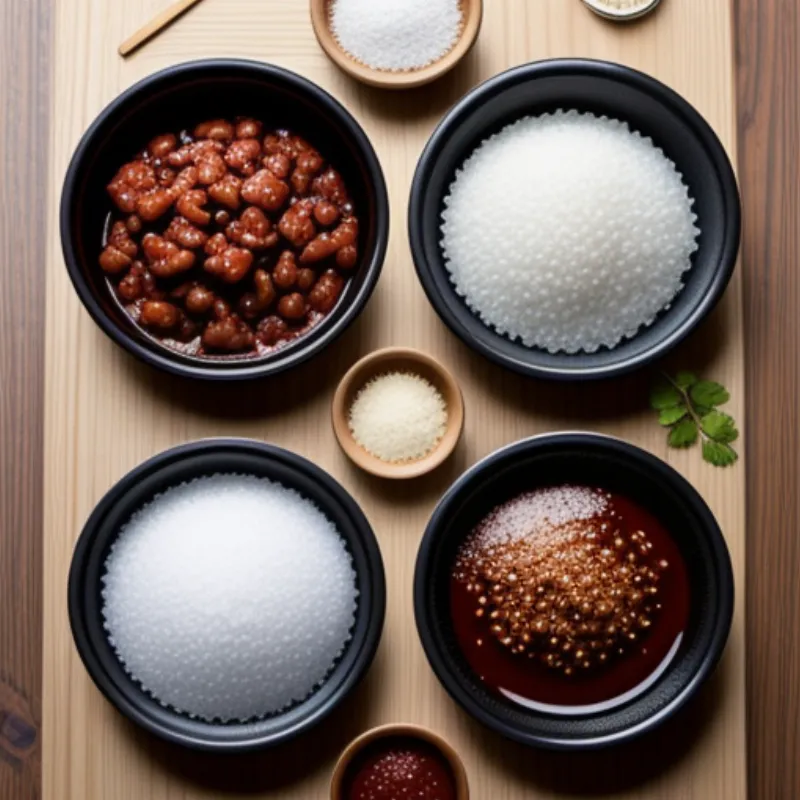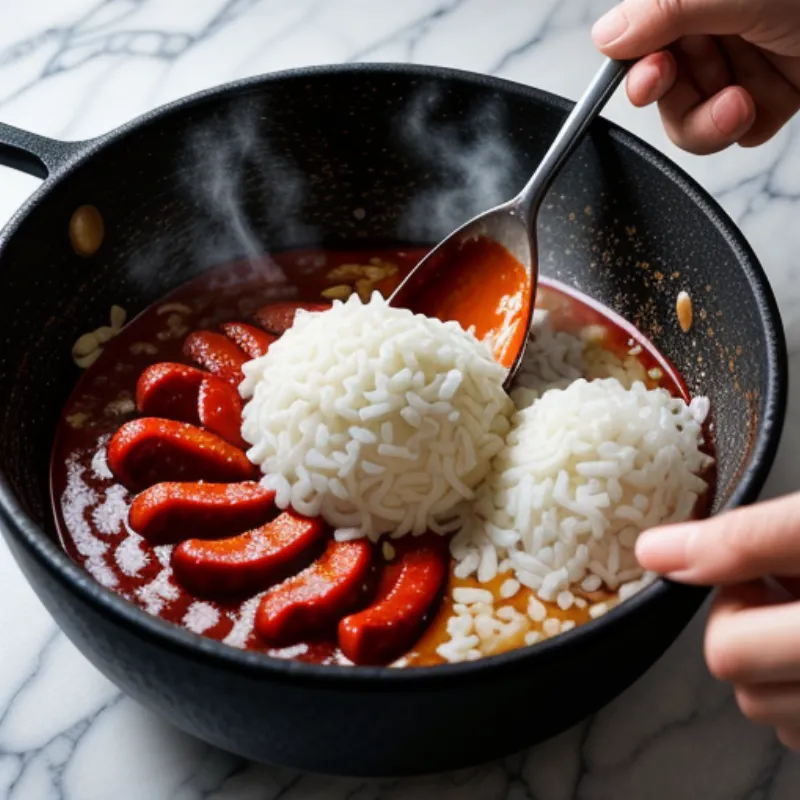Dak-galbi, meaning “spicy stir-fried chicken,” is a beloved Korean dish that’s bursting with flavor. While the tender chicken and vibrant vegetables play starring roles, the heart of this dish lies in its rich, spicy, and slightly sweet Dak-galbi sauce. This sauce, a mesmerizing blend of gochujang, gochugaru, and other pantry staples, has the power to transport your taste buds straight to the bustling streets of Korea. Today, we’ll embark on a culinary adventure to recreate this iconic sauce in your very own kitchen. Get ready to impress your family and friends with the magic of homemade Dak-galbi sauce!
Unveiling the Flavor: Ingredients for Dak-galbi Sauce
Before we dive into the recipe, let’s gather our ingredients. Each component plays a crucial role in crafting the signature Dak-galbi taste:
Core Ingredients:
- 2 tbsp gochujang (Korean chili paste): This fermented chili paste provides the base heat and a subtle sweetness.
- 1 tbsp gochugaru (Korean chili flakes): These flakes add a vibrant red color and a touch of smokiness.
- 2 tbsp soy sauce: This enhances the savory depth of the sauce.
- 1 tbsp sugar: A touch of sweetness balances the spiciness.
Flavor Enhancers:
- 1 tbsp rice wine: This adds a layer of complexity and aroma.
- 1 tbsp minced garlic: Garlic brings its signature pungent kick.
- 1 tsp grated ginger: Ginger adds a refreshing and slightly spicy note.
- 1/2 tsp black pepper: A pinch of black pepper adds a hint of warmth.
Optional Extras:
- 1/2 tbsp sesame oil: For an extra layer of nuttiness and aroma.
- 1 tsp toasted sesame seeds: For garnish and added texture.
- Chopped green onions: For a final touch of freshness and color.
Chef’s Tip: “Don’t be afraid to adjust the spiciness to your liking. You can start with less gochujang and gochugaru and gradually add more until you achieve your desired heat level.” – Chef Lee, Korean Cuisine Specialist
 Dak-galbi Sauce Ingredients
Dak-galbi Sauce Ingredients
Equipping Your Culinary Arsenal: Tools You’ll Need
Making Dak-galbi sauce is a breeze, and you likely already have all the necessary tools:
- Small mixing bowl: For combining the ingredients.
- Whisk: To ensure a smooth and well-combined sauce.
- Measuring spoons and cups: For accurate measurements.
- Airtight container: For storing any leftover sauce.
Crafting the Masterpiece: Step-by-Step Guide
Now that we have our ingredients and tools prepped, let’s bring this flavor-packed sauce to life:
-
Combine the base: In your mixing bowl, whisk together the gochujang, gochugaru, soy sauce, and sugar until thoroughly combined.
-
Infuse with aromatics: Add the rice wine, minced garlic, grated ginger, and black pepper to the mixture. Whisk again until everything is well incorporated.
-
Taste and adjust: This is where your culinary intuition comes into play. Give the sauce a taste and adjust the seasonings according to your preference. You might want to add a pinch more sugar, a dash of gochugaru for extra heat, or a splash of water to thin the consistency.
-
Optional additions: For an extra layer of flavor, stir in the sesame oil. You can also toast the sesame seeds lightly in a dry pan until fragrant and sprinkle them on top of the finished sauce.
Pro Tip: “Allowing the sauce to rest for at least 30 minutes before using will enhance its flavor. The ingredients will have time to meld together, resulting in a more harmonious taste.” – Chef Park, Author of “Secrets of Korean Cooking”
 Mixing Dak-galbi Sauce
Mixing Dak-galbi Sauce
Dak-galbi Sauce FAQs: Your Questions Answered
Q: Can I make Dak-galbi sauce ahead of time?
A: Absolutely! You can make this sauce up to 3 days in advance and store it in an airtight container in the refrigerator. This allows the flavors to further develop and intensify.
Q: What can I use as a substitute for gochujang?
A: While nothing can truly replace the unique flavor of gochujang, you can use a mixture of miso paste and Korean chili flakes for a similar savory and spicy profile.
Q: Is Dak-galbi sauce very spicy?
A: The level of spiciness is adjustable. You can control the heat by adding more or less gochujang and gochugaru. Remember, you can always add more spice but you can’t take it away!
Beyond the Basics: Serving and Storing Your Dak-galbi Sauce
Presentation is Key:
This vibrant red sauce deserves to be showcased beautifully. Serve it in a small dipping bowl alongside your Dak-galbi, or drizzle it artfully over your culinary creations. Garnish with a sprinkle of toasted sesame seeds and chopped green onions for an extra touch of elegance.
A World of Flavor Combinations:
While Dak-galbi sauce is traditionally used in the eponymous chicken dish, its versatility extends far beyond. Use it as a marinade for tofu, shrimp, or vegetables. Toss it with noodles for a spicy kick, or use it as a dipping sauce for dumplings or spring rolls. Let your culinary creativity run wild!
Preserving the Goodness:
Store any leftover sauce in an airtight container in the refrigerator for up to 5 days.
 Dak-galbi Sauce in a Bowl
Dak-galbi Sauce in a Bowl
Ready to Embark on Your Dak-galbi Adventure?
Creating your own Dak-galbi sauce at home is easier than you might think. With a few simple ingredients and our step-by-step guide, you’ll be well on your way to experiencing the bold and flavorful world of Korean cuisine. So go ahead, gather your ingredients, and let’s get cooking!
Don’t forget to share your culinary creations with us! We’d love to hear about your Dak-galbi sauce adventures in the comments below. Happy cooking!
